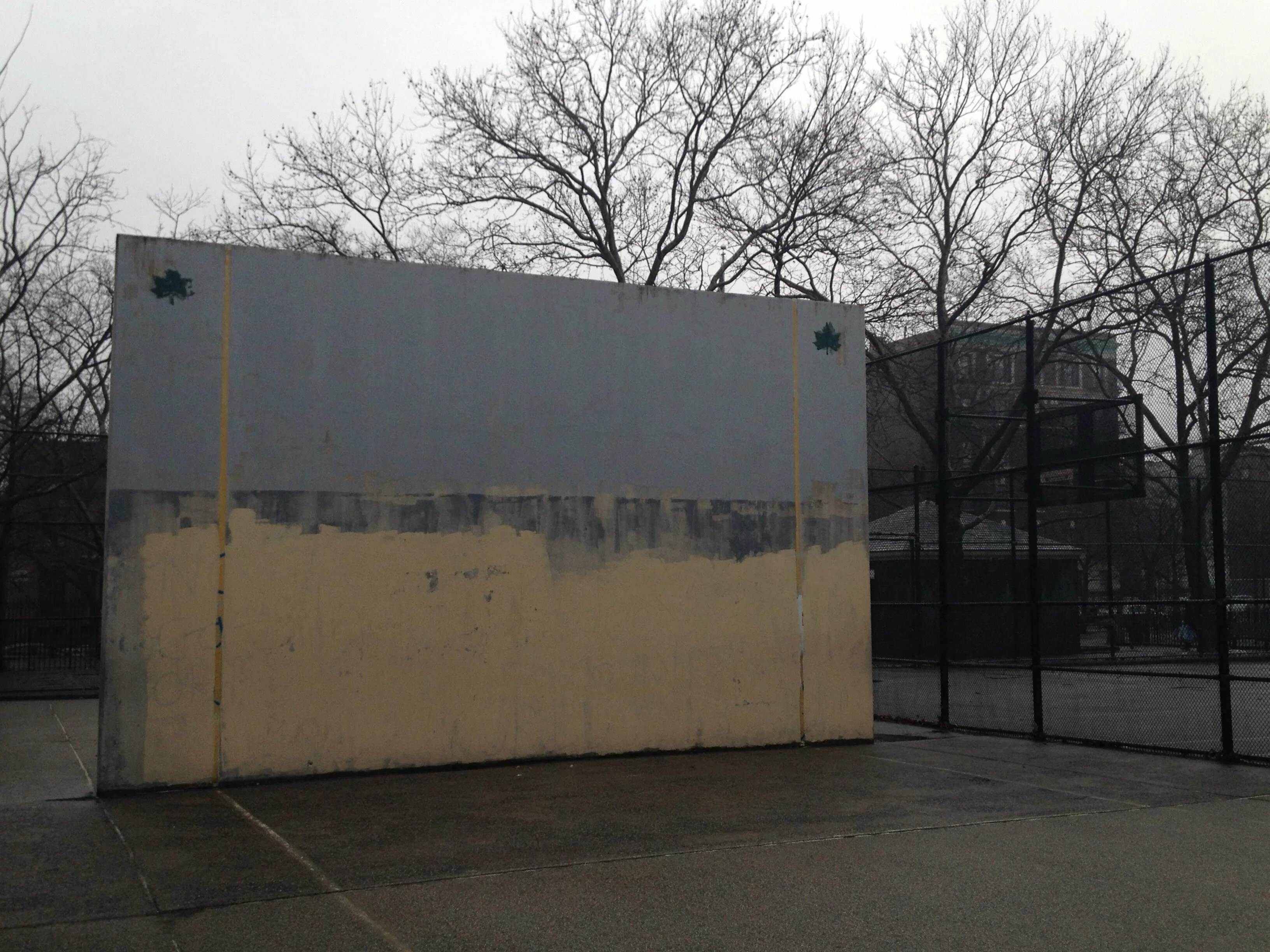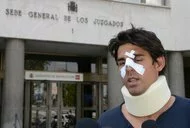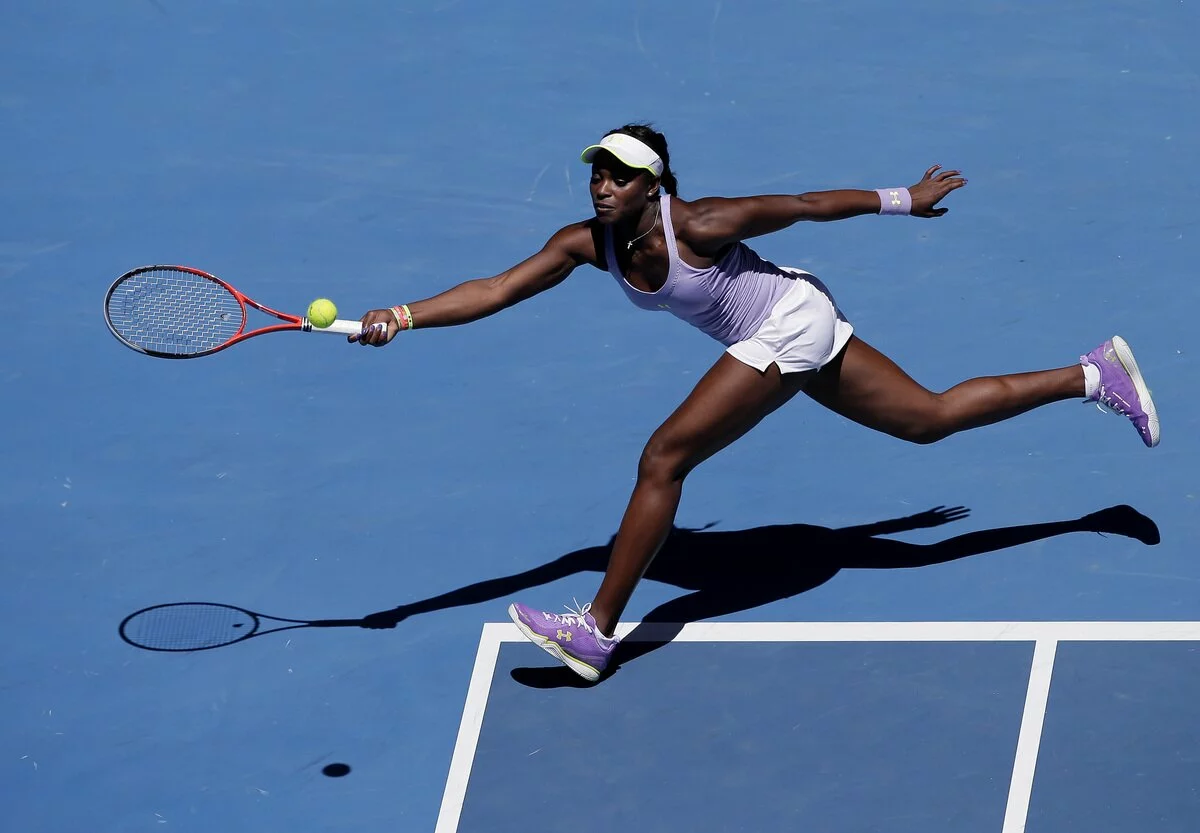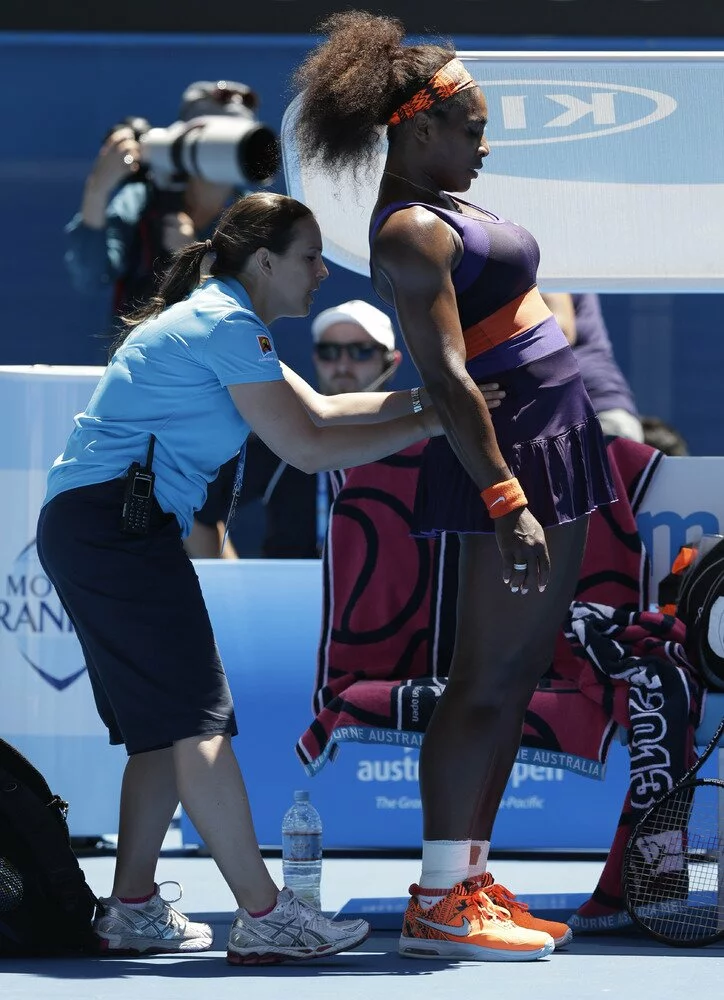When long-distance runners talk about hitting the wall, they mean the dead legs and overwhelming exhaustion that comes from gobbling up all their bodies' stored-up glycogen. When tennis players talk about hitting the wall, they're usually more literal.
 My Worthy Opponent, ready and waiting at the corner of Greene and Waverly Avenues.
My Worthy Opponent, ready and waiting at the corner of Greene and Waverly Avenues.
They're talking about a form of practice that doesn't need a court or another tennis player.
When I Hate Tennis talks about hitting the wall, it's about both. Because when I've tried to hit against a wall, I've developed such a mental weariness that it's made me want to chuck the racquet and eat a box of donuts.
My Worthy Opponent, Marcy Rosewater, was singing the praises of wall-hitting. "It really helps me focus on my strokes. I can feel what I'm doing wrong and correct it."
"Not me," I moaned. "I hit the ball, it hits the wall and then dies in front of me, or sails above my head." Oh, yeah, I failed to mention that often, I hit the ball over the wall itself. This is quite a feat, Haters. Take a look at that handball wall above. It's, like, 20 feet high.
I sighed. "The only thing I seem to get to work on is being a better ball retriever."
"You just have to keep at it. You get into a rhythm," said Marcy.
Well, YOU do, I said to myself. I could feel Tennis Hate blooming like a black rose in my chest. Where were those donuts??
Now, I'm a True Grit kind of athlete. I've taken 2-hour spin classes. I've been on century bicycle rides. I've been to Saddlebrook's grueling, 5-hour tennis clinics in Florida, and have relished them. Eventually, after rolling my eyes and whining, I suit up and show up. I'll take Marcy's suggestion and try once again to put some time in front of the wall. But I'm stunned by the knowledge that my default setting is, I can't do this! It's not fair!
I'm inclined to think something is wrong with me. I need to change my mindset, reduce my frustration, BE POSITIVE, visualize happy hitting. Sports psychologists encourage this.
But I'm intrigued by Oliver Burkeman's book, The Antidote: Happiness for People Who Can't Stand Positive Thinking, who surveyed psychologists and philosophers working in the field of happiness and found this:
The startling conclusion at which they had all arrived, in different ways, was this: that the effort to try to feel happy is often precisely the thing that makes us miserable. And that it is our constant efforts to eliminate the negative -- insecurity, uncertainty, failure, or sadness -- that is what causes us to feel so insecure, anxious, uncertain, or unhappy.
The solution, what Burkeman calls the "negative path" to peace of mind, involves "learning to enjoy uncertainty, embracing insecurity, stopping trying to think positively, becoming familiar with failure, even learning to value death."
I got familiarity with failure down, no problem. Value death? Got to work on that one.
I've been in a funk about my game. In the middle of a lesson or a game, I can feel myself pushing the ball, swinging from my wrist, not my shoulder, leaning toward the ball from my waist rather than bending my knees, all the bad habits I've been told not to do. I've taken thousands of dollars' worth of lessons, have spent 10 years on the court trying to develop a forehand drive and a finishing volley. Why do I keep reverting to my old, tentative, pushy ways? I can't do this! It's not fair!
I have toyed with the idea that tennis isn't for me, and I should take up something more immediately gratifying and endorphin-producing. Like baking donuts.
I've been asking myself: If this is the best that I'll ever be, is that okay?
But I don't really want to give up. That's not the True Grit creedo. I really love tennis. I enjoy the camaraderie, the warm-up rituals, the courtesy and sportsmanship embedded in its rules. I love how physical it is, and mental, too, how it requires total and absolute focus from moment to moment, much like meditation. When I achive those precious seconds of concentration, everything dissolves -- the court, my opponent, Tennis Hate and the infernal chatter of what W. Timothy Gallwey calls Self 1. I feel free and powerful and alive, even if I lose the point.
So, I've been playing with my Tennis Hate rather than against it. It's okay that it's there. I'm not, as Burkeman describes in his book, "trying to drown negativity out with relentless good cheer." I'm trying to seek "the happiness that arises through negativity."
I've been asking myself: If this is the best that I'll ever be, is that okay? What does it mean to have limits? What happens when I reach mine? Will anybody kick me off the court? Will no one want to play with me ever again if they don't see continued improvement toward a kick serve like Samantha Stosur's? No, really: Will others love me less? Will I have less value if I don't get a good, strong forehand approach shot?
That's the mental part. Technically, I've been following what my Saintly Pros, Anne Hobbs and Al Johnson, have been telling me, and that is to simplify what I do, narrow my focus. I think of two things while I hit a groundstroke: turn sideways to the approaching ball and extend through the shot, "swing to catch." At the net, I think of getting my racquet out in front of me for my volley. That's it. I practice leaving all the running commentary on the sidelines, in a messy pile with my warmup pants and coat.
When I expose the lies my Tennis Hate tells me, I start to find some peace -- even joy -- on the court. When I put my focus on simple tasks, like turning my body sideways to the ball, I experience the sweetness that comes with executing something you intended to do. It's easier to just turn sideways and swing through the ball than it is to follow a ten-point checklist: "Racquet back? Check! Body sideways? Check! Left hand extended out to the point of contact? Check! Butt of the racquet toward the ball? Check!" Ad nauseum.
Forget those donuts. Where's my racquet?
 Amy Eddings Posted on
Amy Eddings Posted on  Tuesday, May 7, 2013 at 9:12PM
Tuesday, May 7, 2013 at 9:12PM
 Crying over unspilt milk: Thomas Drouet says John Tomic head-butted him. Courtesy AFP/Getty Images.
Crying over unspilt milk: Thomas Drouet says John Tomic head-butted him. Courtesy AFP/Getty Images. ATP tour suspension,
ATP tour suspension,  Bernard Tomic,
Bernard Tomic,  John Tomic,
John Tomic,  Madrid Open,
Madrid Open,  Thomas Douet,
Thomas Douet,  head-butt | in
head-butt | in  Injuries,
Injuries,  Meltdowns,
Meltdowns,  Tennis Hate Proof,
Tennis Hate Proof,  tennis hate
tennis hate





